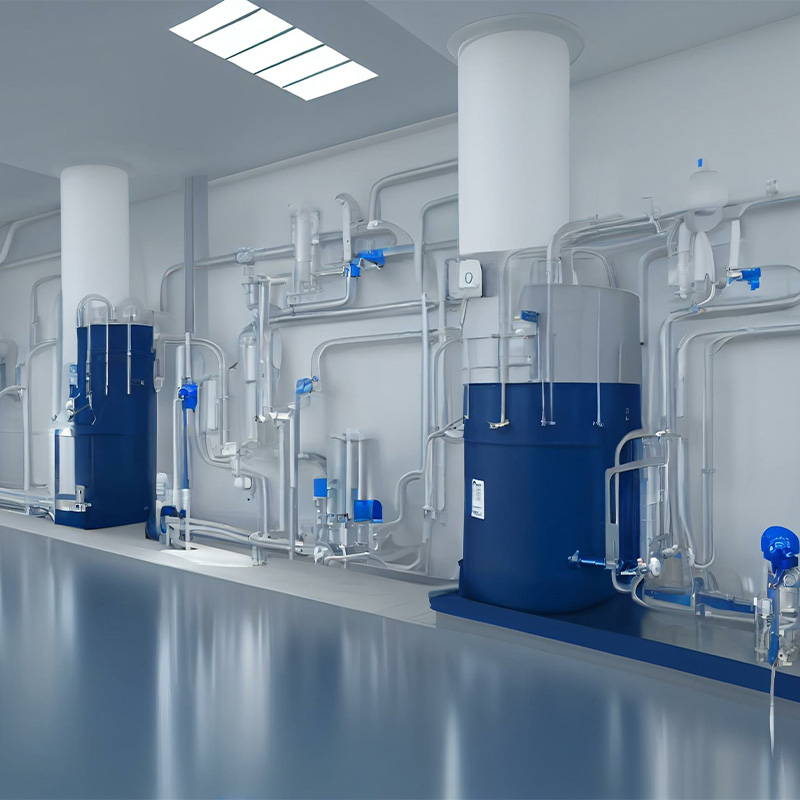
The Tide is Coming in for Saltwater Flow Batteries
What is a Saltwater Flow Battery?
A saltwater flow battery is a type of rechargeable battery that uses two tanks of saltwater solutions, one with a positive electrode and one with a negative electrode, which are pumped through a reactor to produce electricity. The battery generates electricity by circulating the saltwater electrolytes through a series of electrochemical cells, where they react with electrodes to produce a flow of electrons. The process is reversible, meaning that the battery can be charged by reversing the direction of the flow of the electrolytes.
Saltwater flow batteries are a promising technology for storing renewable energy from sources such as solar and wind power. They have several advantages over traditional lithium-ion batteries, including longer cycle life, lower cost, and a lower environmental impact. They are also safer, as they use non-toxic, non-flammable electrolytes.
Saltwater flow batteries come in different sizes and configurations, from small-scale residential units to large-scale grid storage systems. They are being developed by several companies and research institutions around the world, with the aim of creating a more sustainable and reliable energy storage solution.
Saltwater Flow Batteries offer a great opportunity for the Marine Sector
Infinity Turbine has developed a desalination system that uses a saltwater redox flow battery from its subsidiary Salgenx to produce clean drinking water from seawater. The technology involves the use of a saltwater flow battery cycle that can store or discharge electricity without a membrane, allowing the system to remove salt from brine or seawater. The battery can be charged using renewable energy, such as solar or wind power. The new system will be trialed in both stationary and marine vessel applications. Infinity Turbine claims its system provides a sustainable and cost-effective way of producing fresh water from seawater and can be used in areas where water scarcity is an issue. The battery has an energy density of 125.7 Wh/L, and the total system cost is $500,000.
Saltwater Flow Batteries ideal for both Conserving Water and Co-location in California
A California water irrigation district, Turlock Irrigation District, is deploying an Energy Warehouse system by ESS, a saltwater energy storage system manufacturer, to store solar energy generated by a 4 MW solar canopy installed on an irrigation canal as part of Project Nexus. The initiative aims to generate clean energy while conserving water resources and reducing evaporative losses in California’s arid environment. The Energy Warehouse was selected for its non-toxic characteristics, making it ideal for siting adjacent to water infrastructure. The iron flow technology provides long-duration energy storage and can last up to 25 years without capacity fade. The project will be completed in 2024. The University of California, Merced, suggests that up to 13 GW of solar capacity could be installed over California’s canals, which could require up to 3 GW of energy storage systems.
Are Saltwater Flow Batteries a threat to traditional Battery Storage Materials?
Unlike vanadium and bromine redox flow batteries, saltwater flow batteries do not require an expensive membrane, which has impeded their commercial success. Additionally, saltwater flow batteries offer several advantages over other battery types, including non-toxicity and availability in many sources, making it an eco-friendly and sustainable option.
While lithium-ion batteries are currently the most widely used form of energy storage, the demand for grid-scale storage solutions is increasing rapidly, leading to a skyrocketing pressure on lithium prices. In contrast, saltwater flow batteries are inexpensive, with the cost of electrolytes being less than five dollars per kilowatt.
Saltwater flow batteries are particularly suitable for large-scale storage for wind and solar power, which are becoming increasingly important as renewable energy sources, compared to more traditional sources like Hydropower. Moreover, saltwater flow batteries can be sourced and assembled on-site, empowering local communities to build their storage systems.
Overall, while saltwater flow batteries are not yet widely adopted, they have the potential to replace other forms of energy storage, including vanadium and bromine, particularly for large-scale energy storage applications. However, Lithium is likely to be much harder to dethrone. Lithium has four clear competitive advantages:
Higher Energy Density:
Lithium-ion batteries have a higher energy density than saltwater batteries, which means they can store more energy in a smaller size, making them ideal for electric vehicle applications.
Faster Charging:
Lithium-ion batteries can be charged more quickly than saltwater batteries, which makes them a more practical option for electric vehicles and other applications where fast charging is important.
Longer Life Span:
Lithium-ion batteries typically have a longer lifespan than saltwater batteries, which means they can be used for more extended periods before needing to be replaced.
Incumbency Advantage:
Lithium-ion batteries are a more established and widely used technology, with a vast amount of research and development investment in the past decade. The technology has been tested and used in the mass production of electric vehicles.
Whilst Lithium’s advantages are plain, this is also not an either/or choice. Its clear that Saltwater flow batteries are on a rising tide and can provide a complimentary energy storage alternative.
